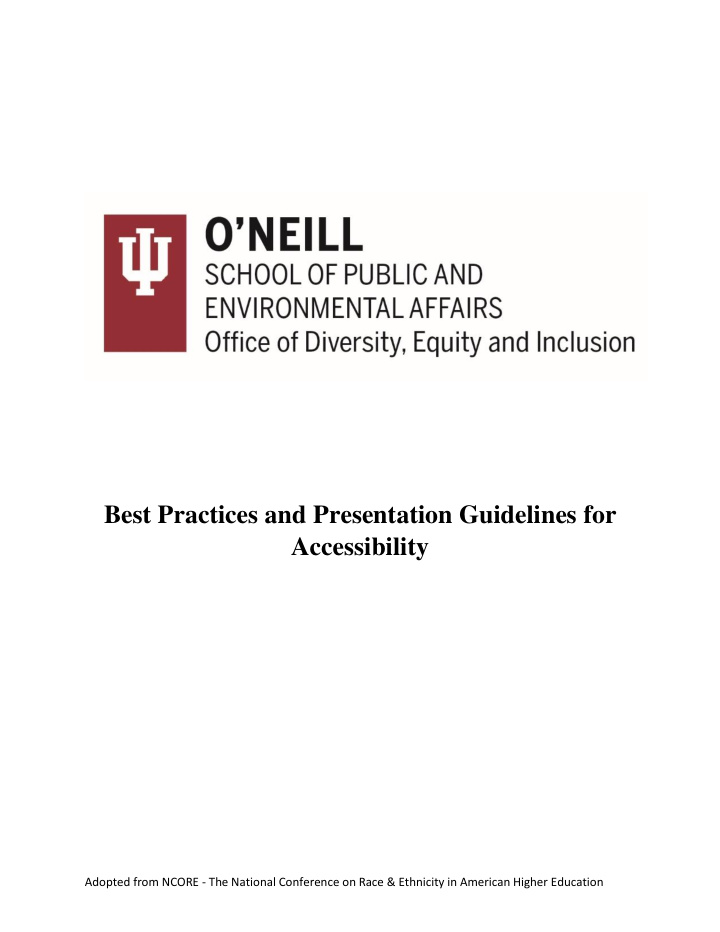



Best Practices and Presentation Guidelines for Accessibility Adopted from NCORE - The National Conference on Race & Ethnicity in American Higher Education
Presentation Accessibility POWERPOINTS We recommend the American Publishing House for the Blind’s PPT for a complete understanding of presentation accessibility. Formatting suggestion include: Slide background must remain white All text must be black and in a sans serif font (i.e. Helvetica, Geneva, Verdana, APHont, Antique Olive, Arial, Tahoma) Headings = 32pt or larger Subheadings = 30pt or larger Body text = 28pt or larger HANDOUTS Best practice suggestion: create a large print version of any handouts included in presentation. Please refer to the APH’s PPT for a complete understanding of handout accessibility. Formatting requirements include: White background/black text (high contrast/readability) Headings = 22pt or larger Subheadings = 20pt or larger Body text = 18pt or larger Adopted from NCORE - The National Conference on Race & Ethnicity in American Higher Education
MUSIC/FLASHING LIGHTS/FLASHING IMAGES OR VIDEO These presentation elements can trigger seizures and other health concerns for participants. MICROPHONES All presenters must use a microphone (one microphone per presenter). At least one mic should be provided for Q&A. If no additional microphones are present, we ask that presenters repeat questions over the microphone before answering. Without microphones, room acoustics and hearing impairment can make content inaccessible for participants. Please respect participant needs without requiring them to self-identify. VIDEOS/FILMS All videos and films must be captioned. AUDIO RECORDINGS OF PRESENTATIONS Participants have the legal right to record presentations as a means of notetaking based on accessibility needs (Section 504 of 1973 Rehabilitation Act and Americans with Disabilities Act (ADA). Participants who require this method will sign a waiver to protect presentation content and research. Adopted from NCORE - The National Conference on Race & Ethnicity in American Higher Education
SEATING Priority seating for accessibility needs will be marked and enforced in the front and back rows of every session. These seats must remain open until the session begins. Reasons for priority seating include hearing and vision impairments, age, chronic illness, pregnancy, anxiety, etc. Remember: not all reasons may be visibly apparent. Adopted from NCORE - The National Conference on Race & Ethnicity in American Higher Education
Recommend
More recommend